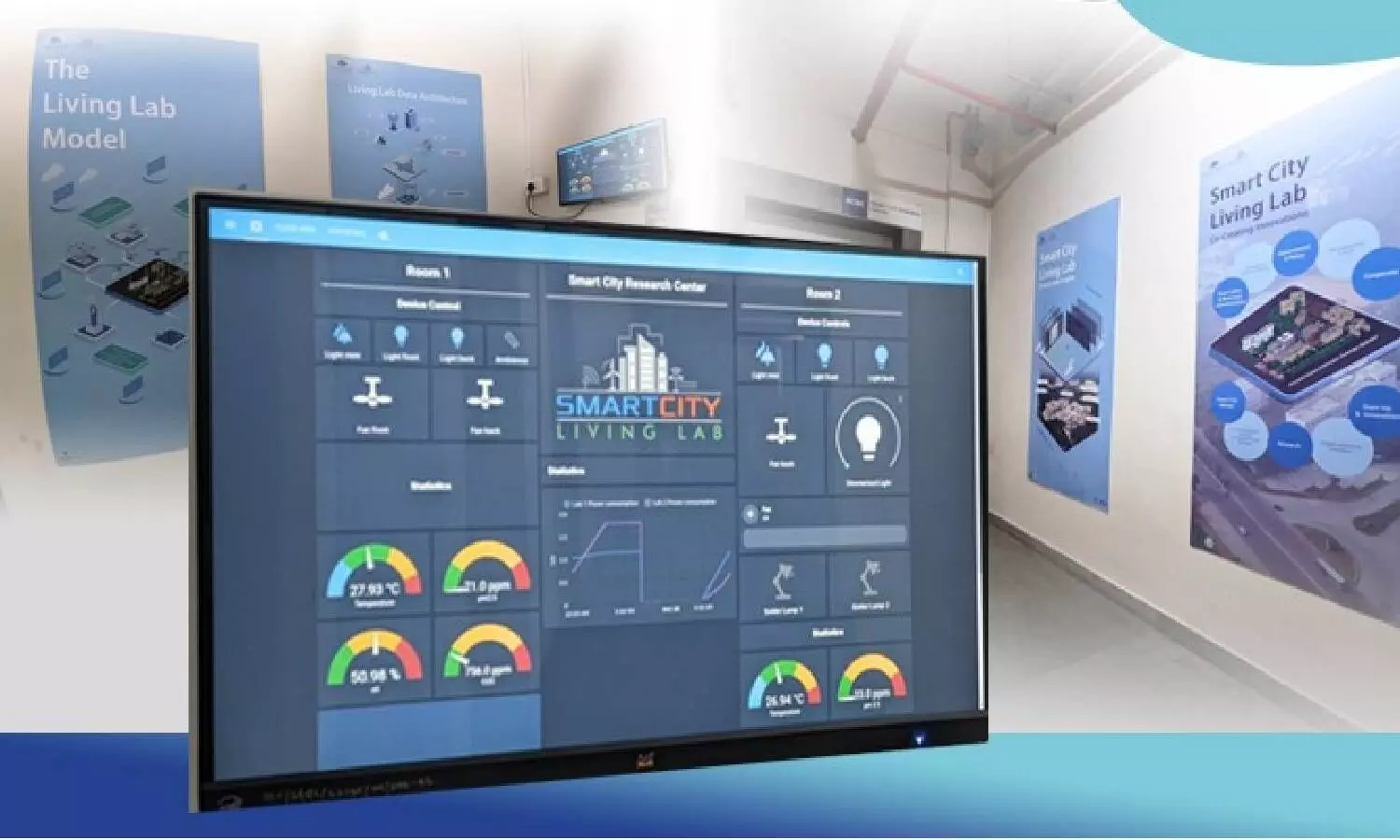Smart campus: India's first living lab opened at IIIT Hyderabad
It all began in 2019 at IIIT Hyderabad's first workshop on embedded systems when Prof. Vishal Garg, Prof. Sachin Chaudharu, and Prof. Aftab Hussain worked with their students to build IoT boards and experimented with using the campus as a live testbed.
By Newsmeter Network
Hyderabad: At the height of the Covid-19 lockdown in August 2020, four engineering students of IIIT Hyderabad—Ayu Pamar, Usha, Ganesh, and Suhas—along with PhD scholar Sam Babu were locked on the campus with their professors. They were building sensors in the quiet anonymity of the campus lab with remote guidance from Anuradha Vattem, the lead architect. This is where IIIT Hyderabad's Living Labs was founded, in the midst of a pandemic.
It all began in 2019 at IIIT Hyderabad's first workshop on embedded systems when Prof. Vishal Garg, Prof. Sachin Chaudharu, and Prof. Aftab Hussain worked with their students to build IoT boards and experimented with using the campus as a live testbed. They deployed their first pollution node and built a web board model to measure pollution levels. Later that year, the team visited France to learn from their experiments on living labs. That is when they realised there was scope to build a living lab on the campus.
The living lab in IIIT Hyderabad is set up with support from MeitY, Smart City Mission, EBTC, and the government of Telangana in collaboration with Amsterdam Innovation Arena. Intel, Silicon Labs, and Saint Gobin came on board as strategic collaborators with India Urban Data Exchange (IUDX) as programme partner.
How does it work?
Between December 2020 and June 2021, the team deployed sensors for water, smart spaces, and air quality at different locations on campus to record data that is updated every 10 minutes. Live data is continuously streamed from 150 sensors to a dynamic dashboard via a series of communication networks. The 3D dashboard offers the user a summary view of the overall status of the campus and gives a feel of where exactly the nodes are placed.
Each of the team members is assigned the task of monitoring different parameters like air quality, water quality, smoke levels on the campus, etc.
A model for smart cities
The team believes that it would be a good model for smart cities to observe and infer. Prof. Loganathan from the team said, "The smart cities mission is five years old and with our Living Lab experience, we hope to pilot our model to other smart cities in India, to update or lead them to become self-sufficient. By way of roundtable conversations and multiple collaborations, we hope to connect to different people because in many places there are no platforms to come together and exchange information."
He added, "The concept of the Living Lab is only the starting point." The idea, he said, is that the overall campus infrastructure will be a melting pot for government, corporate partners, smart city solutions providers, NGOs, policymakers, research labs, and start-ups to discuss new collaborations and for policy formulations.